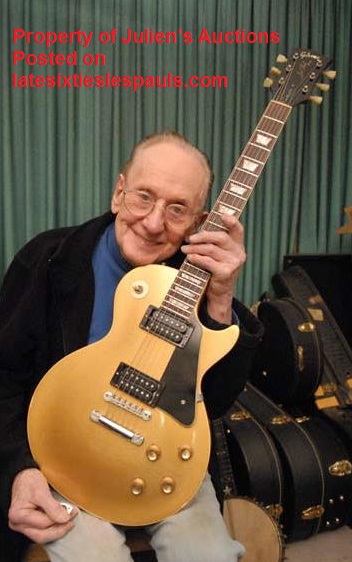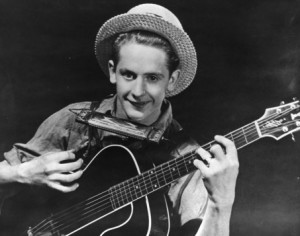Featured Article:
Origins of LSLP's: Lester William Polsfus

The story of the Les Paul guitar begins with a man and a vision long before the topics of this website came to be. Les Paul's career in music began in the 1930's with stints as a country musician. This line of work in turn led him to become a radio personality on many stations in the great cities of Milwaukee, St. Louis, and Chicago. Although involved in radio, jazz, and blues music, Les eventually moved to New York to pursue his own stylings. After some time in the Big Apple and again in Chicago, Les moved to California to work with names such as Bing Crosby, the Andrews Sisters, Pat O'Brien, W.C. Fields, Dick Haymes, Helen Forrest, and many more. Les even spent some time in the service. Ever restless, Les decided to start his own studio to push the technological envelope as far as it could go. There are countless inventions spring from this era of his life, most notably his involvement with multi-track recording. After recording several major hits on Capitol Records, Les decided to once again take a different point of view on the relatively new field of electric guitars.
A collaboration with the Gibson guitar company, led to the release of the first Les Paul signature guitars in 1952. A primitive, but promising early Les Paul guitar eventually evolved into the greatest and most sought after guitars of all time. Trapeze, P-90'ed Goldtops led to wraparound Goldtops. Customs were born in 1954 with the ground breaking ABR / TOM bridge system. The combination of these guitar's strongpoints led to the humbuckered, TOM Les Pauls of 1957 through early 1961. These guitars need no introduction of course, but it is amusing to read Gibson literature circa 1968 regarding the 50's models. For instance, the 'Gibson Gazette, Vol. 8, No. 2' refers to 50's Les Pauls as "the most sought after guitar in the world today." They continued by saying "[h]ere is an instrument which is desired not as a collector's item; it is wanted for its sound." Not a collector's item, eh? :)
Rest in Peace, Les

At this point in the story (about 1961), we reach the critical juncture in the history of Les Paul guitars. No matter the high quality and fantastic sound inherent in 50's Les Pauls, they failed as a business venture. In late 1960 with a few examples trickling out in 1961 (LPC's), the Les Paul model was cancelled by Gibson. The SG replaced the traditional Les Paul in 61 (Even though for a time it carried his name). In 1962 or so, Les and Gibson parted ways. This seemed the end of the road for Les Pauls, but it was only a matter of time before the 50's models found their way to the best and brightest of 1960's musicians. A few of these are typcially credited with resurrecting the Les Paul guitar: Jimmy Page, Mike Bloomfield, Eric Clapton, Keith Richards, George Harrison, Jimi Hendrix (yeah, this is a bit of stretch, but he did have one or two :) ), and many more. Amateur and professional musicians alike began to get curious about the "old" Gibson guitars. Soon the demand for them began to rise. What began as a trickle turned into a torrent of demand for the used guitars. So scarce were original examples, that Gibson decided there was an excellent oppurtunity to return to building Les Pauls. This brings us to the year 1968, and the rebirth of the Les Paul.
1968 and early 1969 Les Paul's are truly direct continuations of the greatest guitars of all time. For the short period of time they were built, they established themselves as the bridge that connects the model's past to its continuing success today.*
* => (January 2006, September 2011 - by the author of this site. Credit: Gibson Gazette, Vol. 8, No. 2, circa. 1968)

